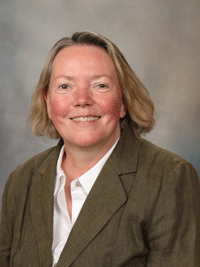SAB's Current and Future Role for Science Within Our Specialtyby Christina Pabelick, MD The 2025 AUA Annual Meeting in Boston was a fantastic highlight for members of the SAB team thanks to all the people who attended and the great feedback we received from the audience. Attendees were especially appreciative of the mock grant review/study section, panel discussions, poster sessions and moderation. In fact, the SAB team was so excited that we started planning other panel discussion topics for 2026 right at the meeting. Attendance and engagement at the mock study section was really encouraging, especially given the additional option of virtual attendance. We have sent out a survey to attendees and others and will share the results soon. In addition to participating in the AUA webinar series with topics focussing on the future of science and academia in our specialty, we sincerely hope that SAB can help grow the new generation of physician-scientists. Although there is several challenges in our current academic and political environment, the number of medical students who are excited about becoming physician-scientists in our specialty is in fact growing (e.g. the increasing number of applications for the FAER MSARF program, medical student attendees at AUA, continued competitiveness of top academic anesthesia residency programs). There are unpublished data that young faculty starting off on a physician scientist track and being funded through one of our societies’foundation grant mechanisms are more successful in staying within academia and being funded through federal or other larger extramural funding mechanisms. However, as a member of the NIH Surgery Anesthesia and Trauma (SAT) study section, the pressures faced by applicants to write competitive, potentially fundable grants, and conversely, the pressure on the review panel to support our field without bias when competing with our surgical colleagues, are palpable. This becomes especially important in the current environment with hiring and financial challenges in our specialty exacerbated by the federal funding issues. In spite of these difficult issues, the AUA and the SAB should take the lead in encouraging our medical students, residents/fellows and our junior faculty in staying committed to the academic mission of our specialty, investing their time and talent into innovative research across the discovery-translation-application spectrum, and work with academic institutions to help improve the environment for physician-scientists who are the future of our society. Author
|


